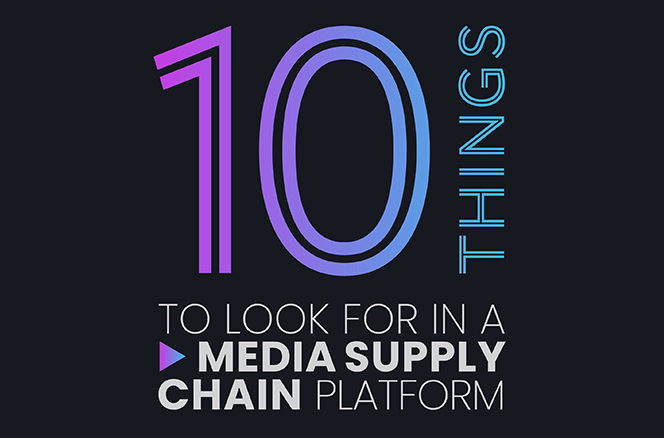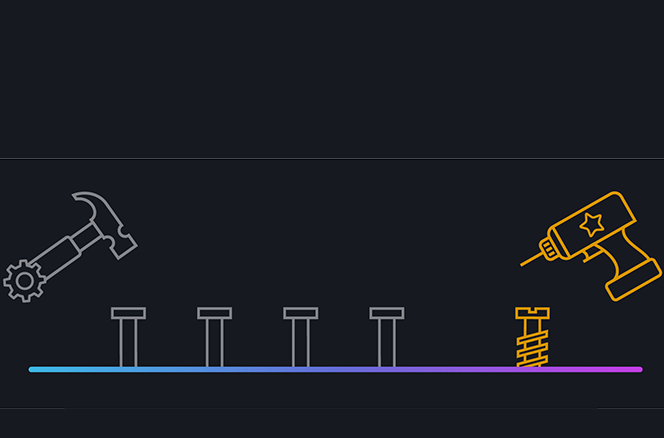Content is most profitable and makes the greatest impact when it can be consumed in as many markets as possible by as many viewers as possible. Before this can happen, however, content must be adapted to align with the local cultural standards, languages, and accessibility requirements of each target market.
For most media companies, adapting content for wide, cross-cultural consumption is the most expensive and time-consuming part of media operations. In some instances, the distribution company will take on this task, and in others, the broadcaster receiving content is responsible for managing localization. In either case, the process interrupts the automated flow of content through the supply chain, cutting into the organization’s overall operational efficiency.
For starters, the process requires information from multiple systems (scheduling, rights, title management, etc.) and content elements that sit across different repositories (video, audio, captions, scripts, synopses, etc.). Some of the work may be done in-house, but a vast majority is outsourced to a language service provider (LSP). LSPs perform tasks such as translation, dubbing, or subtitling to adapt content to the specific cultural and linguistic preferences of the target audience, as well as regional accessibility and compliance regulations.
 In a conventional localization workflow, every request for a localized piece of content requires an operator to find all the elements and place an order with the LSP for the work. All these elements and actions are “tracked” with spreadsheets, emails, and other bespoke approaches that are not easily maintained or shared. Scheduling systems may give operators the information they need to start the process, but every step from that point forward is a manual task with little centralized coordination or management.
In a conventional localization workflow, every request for a localized piece of content requires an operator to find all the elements and place an order with the LSP for the work. All these elements and actions are “tracked” with spreadsheets, emails, and other bespoke approaches that are not easily maintained or shared. Scheduling systems may give operators the information they need to start the process, but every step from that point forward is a manual task with little centralized coordination or management.
So, if there’s a portion of the media supply chain that is in dire need of better efficiency and greater responsiveness, it’s localization. Fortunately, cloud-based media supply chains can be constructed to address this work, and in the process give media companies more capacity to meet ever-greater demand for localized content.
Integrating localization more tightly into the media supply chain, organizations realize significant efficiencies across communication, content and data management, and operator intervention. Operators and service providers gain convenient, centralized access to timely, accurate information. They can trust that files and data are being tracked and kept up to date. Essential steps in the process are triggered automatically, reducing the need for manual intervention and eliminating bottlenecks that delay completion.
With the benefit of these efficiencies, an organization has more time and resources to focus on quality. With the ability to examine the work, gather feedback from viewers, and react to it, the organization can deliver higher-quality content that is better aligned with the preferences of target audiences.
What does a supply chain optimized for localization look like in practice? Let’s take a look at the subtitling and dubbing workflows as implemented by a major European broadcaster using the Rally supply chain management platform.
Optimized Localization in Practice
Determined to shift away from the convoluted and time-consuming process of using multiple systems and a myriad of spreadsheets to manually coordinate the multiple entities and sources of content involved in localization, the broadcaster turned to Rally. Already managing and automating other critical components of the media supply chain, the platform offered an opportunity to transform localization as well.
Integrated with order management and scheduling, Rally streamlines localization from end to end. Depending on when the broadcaster schedules content, and on which channel, its order management/scheduling system generates subtitling and/or dubbing components that then send triggers on to the Rally platform. These components indicate whether the content needs dubbing or subtitling, and in what language. At the same time, the system sends an XML or Excel file to the LSP with instructions and a placeholder for content.
Connected to the organization’s cloud storage and script storage, Rally pulls necessary components into a language pack including a low-resolution proxy, as well as the script and audio files as needed. (Operators can configure alerts to notify them if video and audio are delivered without a script, and this upstream notification can help the organization address that issue proactively and, in turn, prevent delays and avoid no-script charges from the provider.) With that language pack, the LSP completes the job as instructed and sends back the completed subtitle file or dubbed audio file.
At each stage of this process, status updates are sent back to Rally and the scheduling system so that the broadcaster knows whether work is on track, or if there is a delay for some reason. Once the subtitle or audio file is returned by the LSP, checks are performed within Rally to ensure the file is suitable.
Because the media supply chain management platform maintains all updates going to and from the scheduling system and the service provider, it serves as a consolidated source of all information related to the localization process. With all information flowing into this platform, the broadcaster eliminates numerous manual steps (and any associated errors), the duplication of data, and the need to chase down details about project status. At any moment in time, operators can see the status of a request. Rally also delivers email notifications as needed throughout the job to help keep the project running smoothly.
With easy access to scheduling and status information, and helpful triggers at key points in the process, the media organization can be more agile and efficient in handling any issues and in managing scheduling changes. Rather than sift through spreadsheets to determine what happened and when, the organization can simply turn to Rally. Knowing whether content has been sent or if work by the language service provider has begun already, the organization can make more intelligent decisions about how to adapt — and how to avoid costly rush charges.
The organization uses a similar workflow to manage outsourced compliance edits, monitor the progress of work, and ensure the quality of the completed files.
Transforming Operations with Streamlined Localization
How does this localization model transform operations for a media organization? For a start, it allows an existing team to manage a much greater volume of localization work. So, if the organization is planning to introduce a new platform or launch a new FAST channel, for example, it can use Rally and this fully managed process to scale up localization work and prepare all the required content — without needing additional staff. With the increased capacity this model enables, the organization can not only go to market more quickly with more content, but also break into new regions, perhaps performing minimal localization as a test case and then ramping up quickly if the venture proves profitable.
 Enabling tracking and management of the entire process, this streamlined localization model also gives the media organization the ability to hold language service providers accountable. With a great deal more information regarding KPIs, turnaround time, and other aspects of the work, the media organization can ensure agreements are being fulfilled properly. Even more important, the exchange of information gives service providers the insights they need to proactively adapt their schedules and resources to match upcoming project requirements.
Enabling tracking and management of the entire process, this streamlined localization model also gives the media organization the ability to hold language service providers accountable. With a great deal more information regarding KPIs, turnaround time, and other aspects of the work, the media organization can ensure agreements are being fulfilled properly. Even more important, the exchange of information gives service providers the insights they need to proactively adapt their schedules and resources to match upcoming project requirements.
By giving service providers more visibility, the media organization can extend efficiency beyond its own walls, empowering its partners to better plan their resources and optimize their work. Rather than wait for information to be fed to them, service providers can pull scheduling information via Rally and begin to schedule their own work. They can pull content or a script as soon as it’s available in Rally rather than wait for a file transfer. They can assign specific team members to work on specific content, bringing greater consistency to the finished product.
Implementing Optimized Localization for Your Business
How can your organization get started implementing a more streamlined localization model? When you’re already ingesting your content and using automated QC and other cloud-based tools to limit manual touches on incoming content, localization is a logical next step.
With Rally connecting your supply chain to other systems, such as scheduling, and to your preferred LSPs, you move toward a coordinated media supply chain with localization as a centrally managed core element. Rally creates connections and initiates communications among key systems, taking the complexity out of creating workorders and the content packages needed for those workorders, as well as status monitoring as work progresses. Facilitating these tasks in a highly managed way, Rally makes localization an integral part of a modern supply chain rather than the inefficient bolt-on it is for most media organizations today.
Eliminating the need for multiple spreadsheets, emails, and other tools to manage these processes, the platform uses the content you’ve already ingested, keeping it in the cloud, and orchestrates file and information exchanges with your service providers. In addition to streamlining work with LSPs to adapt content appropriately, the platform makes it easy to marry new files with existing content and move it along toward distribution.
As you implement this model and realize faster, smarter localization of more content, you also improve other aspects of your operations. You can use storage more effectively and improve packaging of localized assets for target transmission or distribution platforms. Within a more integrated, and higher-capacity supply chain, you reduce and enhance human involvement across the media supply chain. Taking advantage of automation, management by exception, and comprehensive management of processes requiring human touches and third-party interactions, your organization can handle more content with fewer touches, resulting in greater speed and efficiency.
Localization doesn’t need to be a massive headache. If you’d like to streamline that part of your supply chain, making partnerships with your preferred LSPs more efficient and boosting your content throughput, reach out! We’d love to talk about how Rally can help you make localization a tightly integrated element of your media supply chain along with other key workflows and processes.




